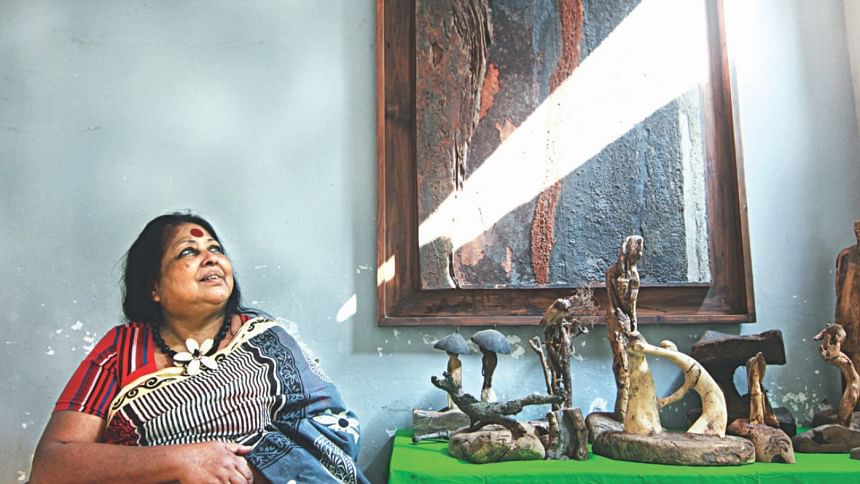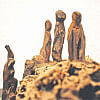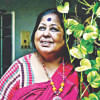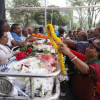The portrait of an artist

How does one pay tribute to the lifetime achievements of an artist, especially when the iconoclast is Ferdousi Priyabhashini? Growing up in Khulna, a quaint town of the then East Pakistan, she once nurtured a passion for music. Her relinquished desire to become an exponent of Tagore gave Bangladesh one of its most revered sculptors.
How does one pay tribute to the lifetime achievements of an artist, especially when the iconoclast is Ferdousi Priyabhashini? Growing up in Khulna, a quaint town of the then East Pakistan, she once nurtured a passion for music. Her relinquished desire to become an exponent of Tagore gave Bangladesh one of its most revered sculptors.
Priyabhashini primarily worked with everyday objects— scrap iron, lifeless wood trunks; often incorporating a touch of greenery in them. She took the debris of a metropolis and made objet d'art.
She is not a pioneer of upcycling objects for the sake of art, yet her approach is unique— breathing life to the 'dead,' to what we perceive as 'waste.'
This is possibly unprecedented in Bangladeshi art history.
Before attempting to appreciate Priyabhashini's artistic accomplishments, one must keep in mind that a sculpture is often a mere mirror image of the inner workings of the artists' mind. Some refrain from engaging in a conversation with the viewer, allowing them full freedom to interpret the art, the form, the nuances, and the finer aspects.
Ferdousi Priyabhashini was perhaps the exact opposite. Rather than dissociating herself from her creations, she engaged in a direct conversation to convey her thoughts, beliefs, fears…and the trauma. Even before Priyabhashini became vocal about her harrowing experience of 1971, she was narrating her struggle through art. It was never shame; neither grief nor sorrow. It has always been life, conviction, and an indomitable urge to live and move forward.
None can possibly never erase, or deny the past. That perhaps is one great peril of human existence. Ferdousi Priyabhashini was a fighter who learnt to come in terms with her horrific experience, accept reality, and decided to share her narrative for the sake of helping others.
It takes courage to be open about the horrors of war, and what victims endured day, after day, after day; but how many of us can fathom the suffering one goes through while sharing that very experience. Every time Priyabhashini spoke, she chose to relive those moments of agony only to help others overcome their suffering.
On 23 October, 2015 the government of Bangladesh for the first time recognised 43 Biranganas as Freedom Fighters. Exactly 43 years, 10 months, 7 days after we achieved freedom!
Ferdousi Priyabhashini is an icon, but in essence, she represents every woman who fights; how she chose to lead her life is an example to follow for every woman, transcending geographical borders that we imagine separates us. It is also probably a wakeup call for every man with a conscience. Our struggle for freedom was in 1971, but abuse and sexual violence is still an everyday reality for hundreds of thousands of women of this country. And the perpetrators are men of this soil!
The unimaginable suffering Ferdousi Priyabhashini had to endure does not define her. It's her indomitable spirit and how she singlehandedly fought social stigma, her lifelong commitment to help others, her strife to set the right course of history for those who never witnessed 1971, and her beautiful, beautiful artworks!
Rest in peace, Ferdousi Priyabhashini.
Rest in peace, Mother.
Photo: Kazi Tahsin Agaz Apurbo

 For all latest news, follow The Daily Star's Google News channel.
For all latest news, follow The Daily Star's Google News channel. 








Comments